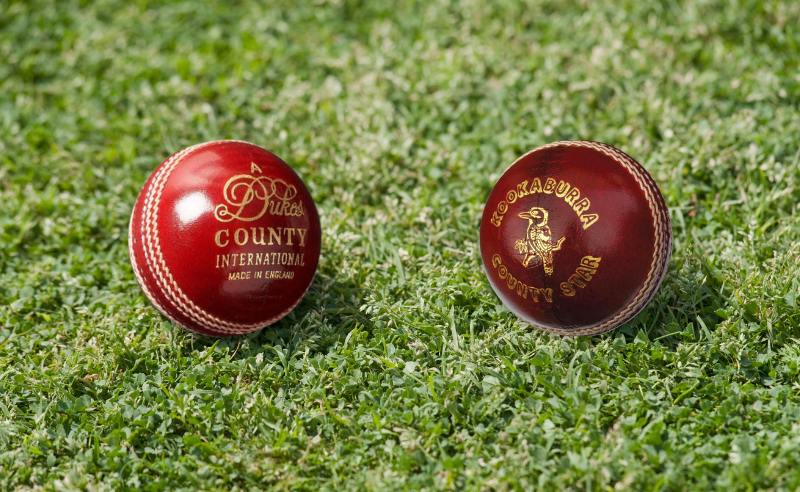
Dukes Cricket Ball vs. Kookaburra Cricket Ball: How To Chose Between Them
|
|
Time to read 2 min
|
|
Time to read 2 min
In the cricket world, every player has their own preferences when it comes to bowling balls. Even every national team has its favourites.
Dukes and Kookaburra are two cricket manufacturers that have been pitted against each other for decades. The Kookaburra Cricket Ball was originally manufactured down under in Australia and used by teams such as New Zealand, South Africa, and Pakistan. WWhile the Dukes Cricket Ball is made here in England and is always a feature in the West Indies and Ireland games.
Although the main difference is that the balls are designed to match the strengths of their home teams, we're wondering: Is one ball better than the other? We've taken a scientific look at their design and production to help you choose which ball is right for you.
Kookaburra has two outer rows of machine-stitching and two inner rows of hand-stitching. While the Dukes cricket ball is completely hand-stitched, giving the ball a prominent seam.
Because there are more rows of thread criss-crossing underneath the leather, this meticulous crafting increases its durability and seam integrity. This lets the ball do more off the seam, making it retain its shape and have a longer-lasting seam compared to a Kookaburra ball.
Overall, the Dukes cricket ball has the best seaming and swing for pace bowlers, while the Kookaburra has a lower seam in comparison but is easier to grip for spinners.
The Dukes cricket ball is held by six rows that go backwards and forwards across the joint, which holds the ball together for longer while retaining its shape.
On the other hand, the Kookaburra cricket ball has two hand-stitched threads keeping the two halves together, with an outer row that is stitched to increase the bowler's grip.
The weather conditions and types of pitches that matches are played on have been a prominent factor in the evolution of cricket balls.
The Dukes cricket ball is way more suited to swing bowling as it keeps its seam and shape more, making it withstand overcast conditions and green top pitches.
On the bouncier pitches of Australia, the Kookaburra cricket ball has a swing at first, but as the seam is lost, the pacers must rely on the bounce off the tracks for breakthroughs.
During the manufacturing of the Dukes cricket ball, grease is applied to the leather during the tanning process. As during the English cricket season there can be unpredictable downpours, the grease makes the ball waterproof.
The grease makes the ball darker and softer, but as English ground conditions are not very abrasive, it doesn't affect the ball's quality. However, bowlers can shine the ball easier, making it swing more and for a longer period of time.
As the Kookaburra cricket ball is a team favourite in drier and warmer countries, grease isn't really necessary.
Compared to the Dukes cricket ball, the Kookaburra has a flatter surface, so ballers can have an easier hold on it. This leads to smoother bowling actions and releases, which enhances aiming for bowlers for consistency in line and length.
In the world of cricket, the choice between a Kookaburra and Dukes cricket ball extends beyond personal preference; it defines the dynamics of the game. Dukes, with its complete hand-stitch finish, offers swing and seam, while Kookaburra, a blend of hand-stitching and machinery, focuses on precision and a low seam.